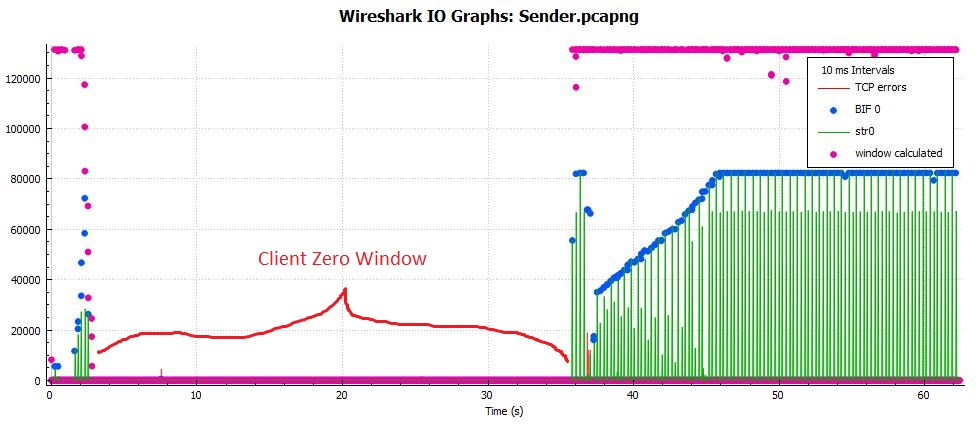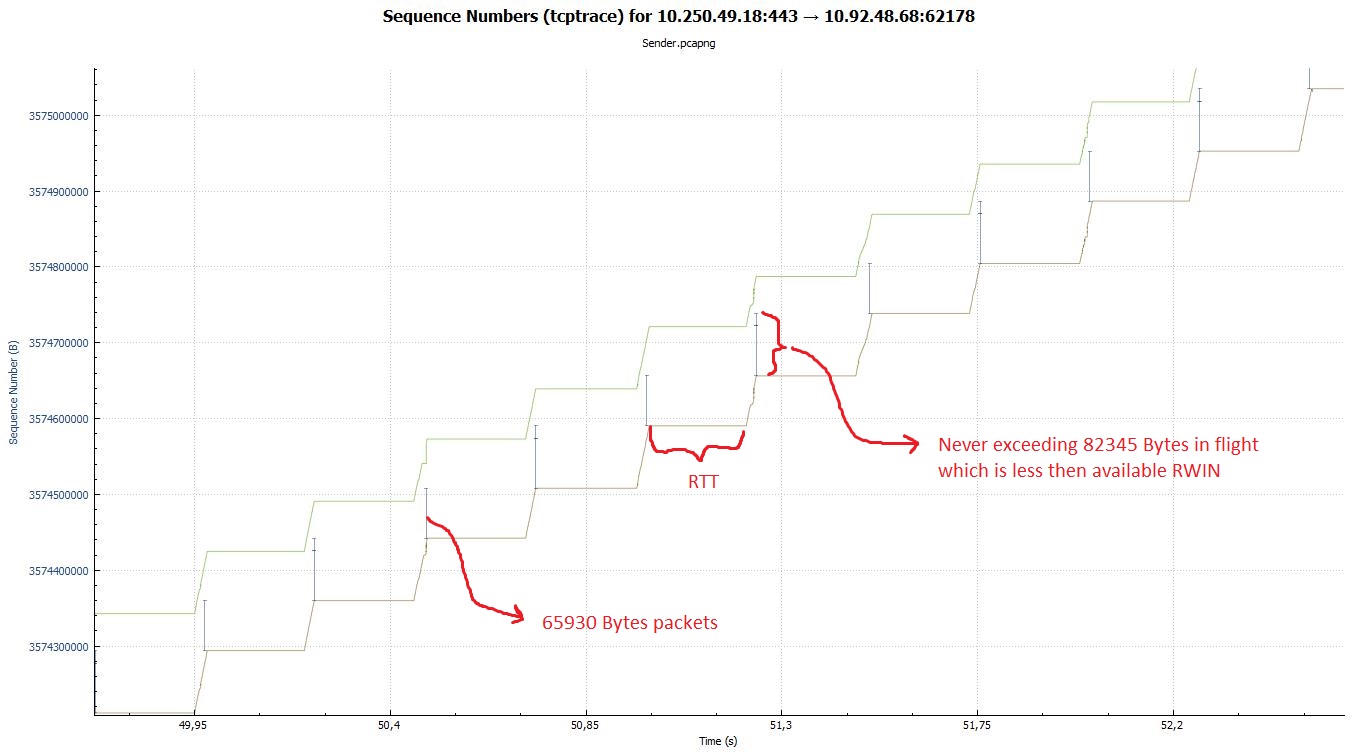 | 1 | initial version |
Below are some observations / thoughts about the case
RTT between endpoints is 200+ms, so this is high-BDP link. Sender-side capture is recorded on the sender itself, therefore we see large packets (offloading engine) of up to 65930 Bytes size which is repeatable throughout many packets. Every large packet contains PUSH flag.
There is a long gap (up to 33 seconds) of total transmission pause caused by Zero Window Condition:

I don't know is it normal or not - we have to consider what application is this (SSL data transfer).

The interesting thing is the sender never exceeds 82345 Bytes in flight, which is LESS than available RWIN.

So the questions are:
Why the receiver doesn't increase it's RWIN? You can try to influence RWIN by playing with auto-tuning settings
 | 2 | No.2 Revision |
Below are some observations / thoughts about the case
RTT between endpoints is 200+ms, so this is high-BDP link. Sender-side capture is recorded on the sender itself, therefore we see large packets (offloading engine) of up to 65930 Bytes size which is repeatable throughout many packets. Every large packet contains PUSH flag.
There is a long gap (up to 33 seconds) of total transmission pause caused by Zero Window Condition:

I don't know is it normal or not - we have to consider what application is this (SSL data transfer).

The interesting thing is the sender never exceeds 82345 Bytes in flight, which is LESS than available RWIN.

So the questions are:
Why the receiver doesn't increase it's RWIN? You can try to influence RWIN by playing with auto-tuning settings
 | 3 | No.3 Revision |
Below are some observations / thoughts about the case
RTT between endpoints is 200+ms, so this is high-BDP link. Sender-side capture is recorded on the sender itself, therefore we see large packets (offloading engine) of up to 65930 Bytes size which is repeatable throughout many packets. Every large packet contains PUSH flag.
There is a long gap (up to 33 seconds) of total transmission pause caused by Zero Window Condition:

I don't know is it normal or not - we have to consider what application is this (SSL data transfer).

The interesting thing is the sender never exceeds 82345 Bytes in flight, which is LESS than available RWIN.

So the questions are:
Why the receiver doesn't increase it's RWIN? You can try to influence RWIN by playing with auto-tuning settings
 | 4 | No.4 Revision |
Below are some observations / thoughts about the case
RTT between endpoints is 200+ms, so this is high-BDP link. Sender-side capture is recorded on the sender itself, therefore we see large packets (offloading engine) of up to 65930 Bytes size which is repeatable throughout many packets. Every large packet contains PUSH flag.
There is a long gap (up to 33 seconds) of total transmission pause caused by Zero Window Condition:

I don't know is it normal or not - we have to consider what application is this (SSL data transfer).

The interesting thing is the sender never exceeds 82345 Bytes in flight, which is LESS than available RWIN.

So the questions are:
Why the receiver doesn't increase it's RWIN? You can try to influence RWIN by playing with auto-tuning settings